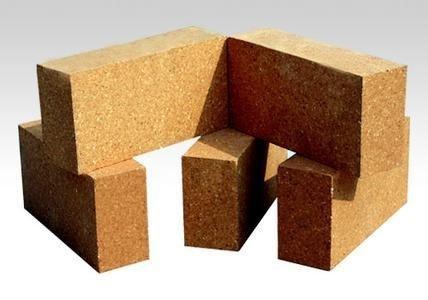Hot Product
Refractory Knowledge
Introduction to the physical and chemical properties of magnesium brick
Date:2020-02-18 10:50 From:Zhengzhou Sunrise Refractory Author:admin
Magnesium bricks are divided into fired magnesium bricks and non-fired magnesium bricks.
The fired magnesium bricks are divided into silicate bonded magnesium bricks, direct bonded magnesium bricks and re-bound magnesium bricks. Non-burning magnesia bricks are divided into chemically bonded magnesium bricks and asphalt bonded magnesium bricks.

Magnesium brick is an alkaline refractory material, which has a strong resistance to alkaline slag, but cannot resist the erosion of acidic slag. At 1600 ° C, it can react with silicon brick, clay brick and even high alumina brick. The fire resistance of magnesia brick is above 2000 ℃, but its load softening point is only 1500 ~ 1550 ℃. Moreover, the temperature interval from the beginning of softening to 40% deformation is very small, and the thermal stability of magnesium bricks at only 30-50 ° C is also poor, which is an important reason for the damage of magnesium bricks.
On heating furnaces and soaking furnaces, magnesium bricks are mainly used for paving the surface layer of the furnace bottom and the lower part of the furnace walls of the soaking furnace. It can resist the corrosion of iron oxide scale.
The conductivity of magnesia brick is very low at normal temperature, but it cannot be ignored at high temperature (such as 1500 ℃). If it is used in the bottom of electric furnace, it should be paid attention to.
Magnesium bricks have poor hydration resistance, are susceptible to hydration in the presence of water, cause cracks, and reduce their strength. Therefore, pay attention to moisture, rain and snow during storage and transportation.
If you are interested in our fused azs bricks, or need other types of refractory materials, please contact our Tianyang Refractory Group, we will definitely provide you with the best quality refractory materials and the most reasonable quotation.
The fired magnesium bricks are divided into silicate bonded magnesium bricks, direct bonded magnesium bricks and re-bound magnesium bricks. Non-burning magnesia bricks are divided into chemically bonded magnesium bricks and asphalt bonded magnesium bricks.

Magnesium brick is an alkaline refractory material, which has a strong resistance to alkaline slag, but cannot resist the erosion of acidic slag. At 1600 ° C, it can react with silicon brick, clay brick and even high alumina brick. The fire resistance of magnesia brick is above 2000 ℃, but its load softening point is only 1500 ~ 1550 ℃. Moreover, the temperature interval from the beginning of softening to 40% deformation is very small, and the thermal stability of magnesium bricks at only 30-50 ° C is also poor, which is an important reason for the damage of magnesium bricks.
On heating furnaces and soaking furnaces, magnesium bricks are mainly used for paving the surface layer of the furnace bottom and the lower part of the furnace walls of the soaking furnace. It can resist the corrosion of iron oxide scale.
The conductivity of magnesia brick is very low at normal temperature, but it cannot be ignored at high temperature (such as 1500 ℃). If it is used in the bottom of electric furnace, it should be paid attention to.
Magnesium bricks have poor hydration resistance, are susceptible to hydration in the presence of water, cause cracks, and reduce their strength. Therefore, pay attention to moisture, rain and snow during storage and transportation.
If you are interested in our fused azs bricks, or need other types of refractory materials, please contact our Tianyang Refractory Group, we will definitely provide you with the best quality refractory materials and the most reasonable quotation.
Inquiry:
If you have any questions or good suggestions on our products and site, or if you want to know more information about our products, please write them and send to us, a representative will contact you within one business day. We guarantee that your information will not be divulged to the third party.

